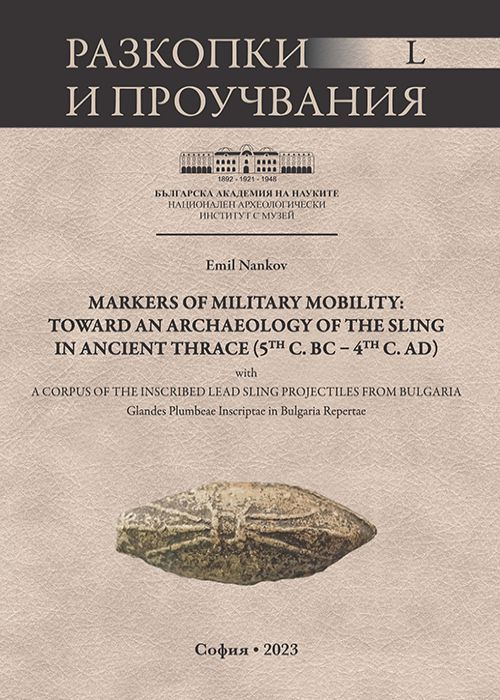This site uses cookies to help give you the best possible user experience. By continuing to browse this site you give consent for cookies to be used!

РАЗКОПКИ И ПРОУЧВАНИЯ, том 50 MARKERS OF MILITARY MOBILITY: TOWARD AN ARCHAEOLOGY OF THE SLING IN ANCIENT THRACE (5th c. BC – 4th c. AD)
WITH A CORPUS OF THE INSCRIBED LEAD SLING PROJECTILES FROM BULGARIA GLANDES PLUMBEAE INSCRIPTAE IN BULGARIA REPERTAE
Kolektiv
10 item(s) in stock
Year of Publication: 2023
Cover Type: Hard
Category: Cultural-Historical Heritage and National Identity
Edition: First Edition
Pages: 260
Format: n/a
Language: English
Summary
The idea for this book has undergone several stages of development since 2012, when I first decided to pursue this subject more seriously. The impetus, which has played a decisive role, was the publication of the materials from the archaeological campaigns at the newly found Thracian fortified residence at Kozi Gramadi, village of Starosel, municipality of Hisarya, which had taken place intermittently between 2005 and 2011 (Христов 2006; Hristov 2011; Hristov 2012; Hristov 2014). As much as the discovery of the site became a turning point for
the development of Thracian settlement archaeology, it also brought to the surface the largest dataset of lead sling projectiles ever to be found in the territory of Bulgaria. The quick publication of some of the inscribed specimens, carrying the names of Macedonian military personnel (Christov, Manov 2011), showed beyond doubt how powerful they could be for the construction of historical narratives about the Macedonian
expansion in Thrace during the time of Philip II and Alexander III. I am privilaged for the opportunity to work with this material by permission from the head of excavations, Ivan Hristov (NHM – Sofia), to whom I express my gratitude. Right from the get go, however, it was clear that understanding the “Kozi Gramadi case” required a solid foundation, so that one would be able to more adequately sift through, evaluate the available archaeological data and reconstruct the big picture.
Аbout The Author
- • Kolektiv
Specifications
ISBN: 978-619-245-385-5
Year of Publication: 2023
Category: Cultural-Historical Heritage and National Identity
Edition: First Edition
Language: English
Cover Type: Hard
Pages: 260
Weight (kg): 1.050 kg
Format: n/a
Width (mm): /n/a
Height (mm): /n/a
Тhickness (mm): /n/a
 en
en Български
Български


